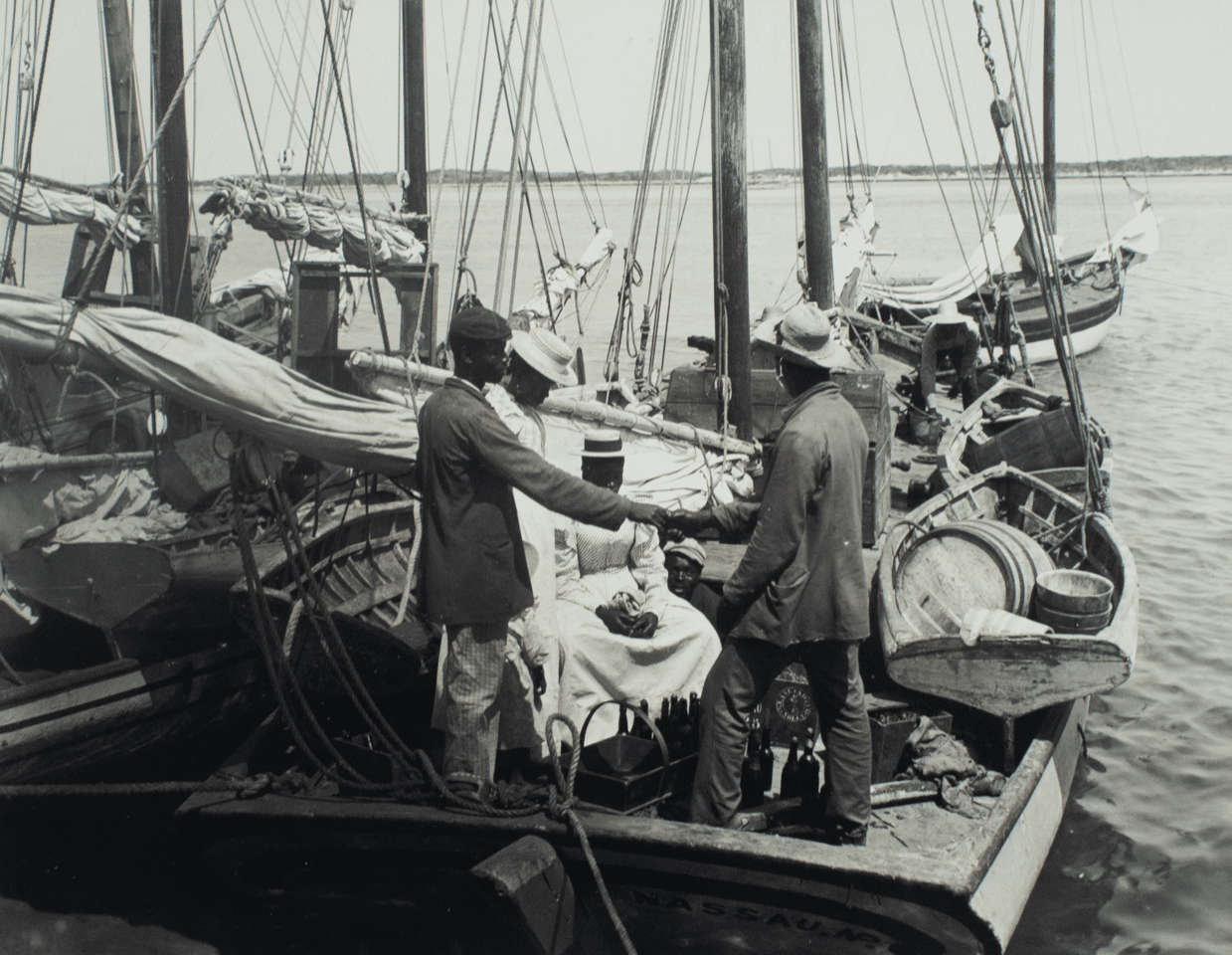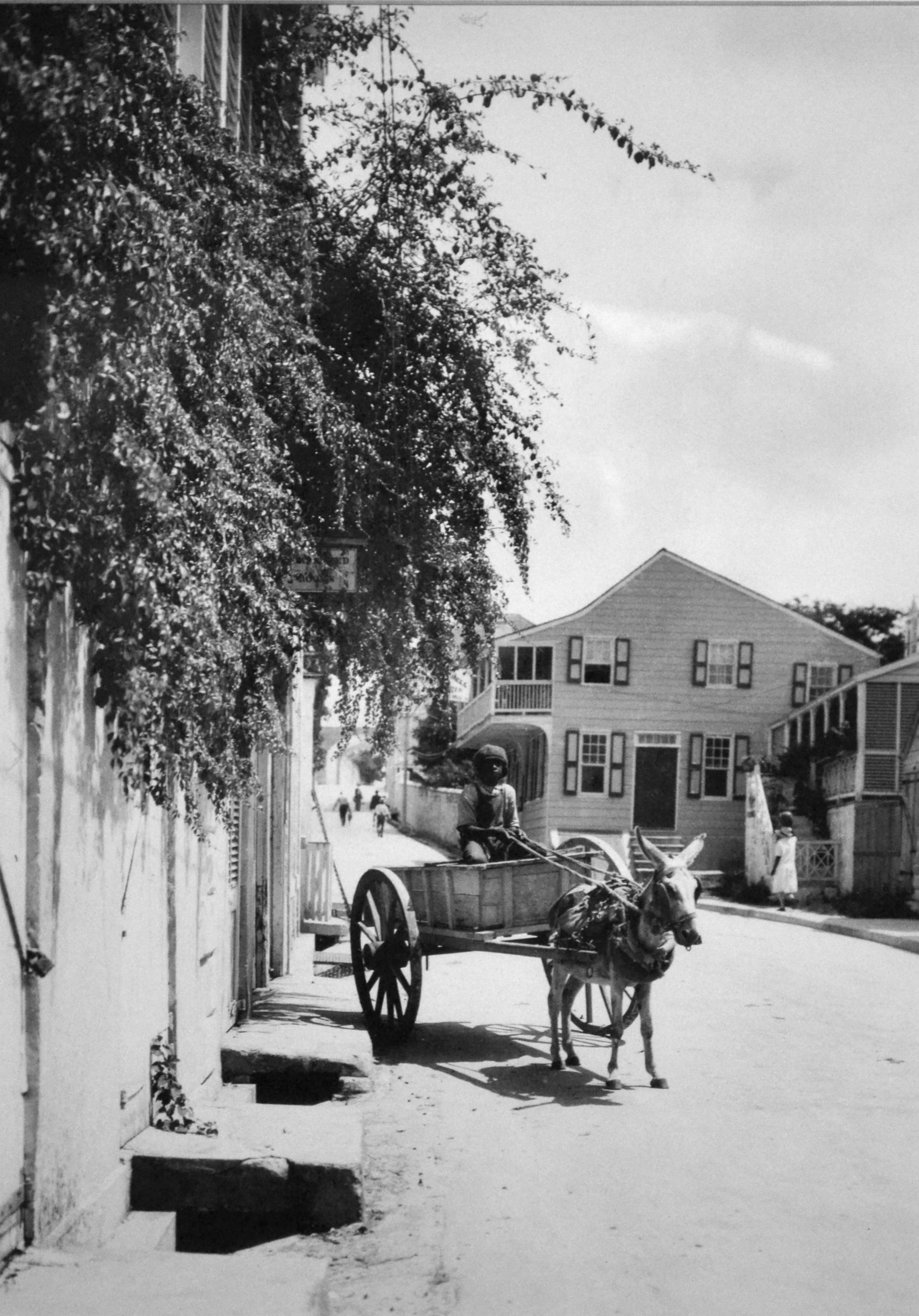By Natalie Willis
One would imagine this a typical scene along the Nassau coastline in the 1920s, as so much of our history – painful or profitable – was tied to the sea’s comings and goings. “Doc” Sands gives us what appears to be commonplace, but when we situate this image in the context of its time, and in our broader Bahamian history, things begin to take an exciting turn. Bottles and barrels that appeared to be ordinary fare now begin to remind us of prohibition and bootlegging, and the men shaking hands could very well be in the middle of a handoff. Of course, much of the imagery photographed at this time was staged out of necessity – things needed to be reasonably still for a prolonged time for the image to be taken appropriately. Was Sands staging this image of prohibition and illicit-alcohol Nassau at its roaring start?
James Osborne “Doc” Sands was born in 1885 in Rock Sound, Eleuthera, and is noted one of the first Bahamian photographers. The second of six children, his parents moved him to Nassau for what they felt to be a better education, and at age 18 he was handed over the photo studio of his mentor, American photographer Jacob Frank Coonley. Coonley and his contemporary William Henry Jackson (also American) were well known for their work, and now historically for their contributions to building and framing the picturesque, tropical images of The Bahamas at the start of its tourism industry, and Sands took up the mantle at a somewhat tender age.


